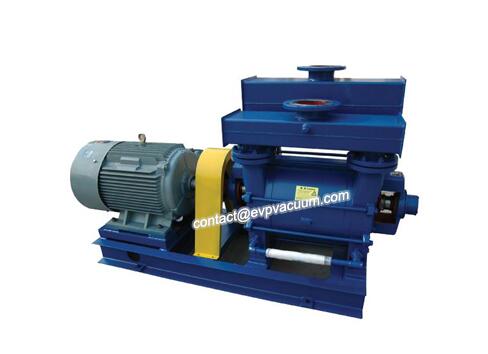Treatment of air leakage in vacuum pump
When the vacuum pump is working, if there is insufficient water, first consider whether the water inlet pipe enters due to sand hole, crack or improper joint, and observe whether it finds the air inlet. Some defects are so subtle that it’s hard to find them directly with the naked eye. Usually, they are laborious and time-consuming, but they are inconclusive. Therefore, next, EVP vacuum pump manufacturers will outline how to deal with vacuum pump leakage.
1. The vacuum pump is not tight
Tighten all connecting bolts, tighten the packing gland, and then tightly wrap the pipes and instruments where they are connected to other components. Or replace the gasket and packing. For air leakage, you can also use oil lime as a temporary remedy.
2. Bearing deflection
This phenomenon causes the impeller to tilt into the pump body. For single acting pumps, the axial clearance is uneven. When the impeller rotates, its part must rub the side cover, scrape the end face of the side cover and the impeller, and increase the axial clearance. When the compressed chamber gas passes through the increased gap, it leaks into the suction chamber in large quantities, which reduces the vacuum or exhaust pressure. At this time, the bearing must be removed for maintenance and then installed correctly.
3. The front and rear side covers are not concentric
The front and rear covers of the vacuum pump may have very different axiality, which results in the same deflection as the bearing.
4. The vacuum pump becomes hot
With the increase of the temperature of vacuum pump, the saturated steam pressure will also increase, which will reduce the vacuum degree, but it has little effect on the exhaust pressure.

Treatment method of vacuum pump leakage:
1. Check that the vacuum damaged door is closed and free of leaks.
2. Check that the condenser steam drain valve is closed and free of leaks.
3. Check the water level gauge in the vacuum system for cracks or leaks.
4. Check whether the exhaust valve of the low-pressure cylinder of the vacuum pump has no fault and no suction.
5. Check whether the water level of low-pressure heater is normal under normal pressure and whether the drain valve is tight.
6. Check whether the condition of the vacuum pump is that the exhaust pipe connected to the cylinder will leak air locally. In this way, when the load is reduced, the leakage air decreases in the vacuum, and the vacuum rises slightly after the load is increased.
7. Check whether the water seal, pipeline, flange or weld joint of vacuum system valve are tight, especially whether the pipeline and valve port from expansion tank or boiler start separator to condenser are firm.
8. Check whether the gravity return water of speed regulating feed pump of vacuum pump can lead to the condenser. If the return water is small, the water seal bag cannot seal the water. The gravity return water of the seal water of the feed pump shall be poured into the groove.
(The article comes from the Internet. If reprinting is not allowed, please contact our company to delete it.)
